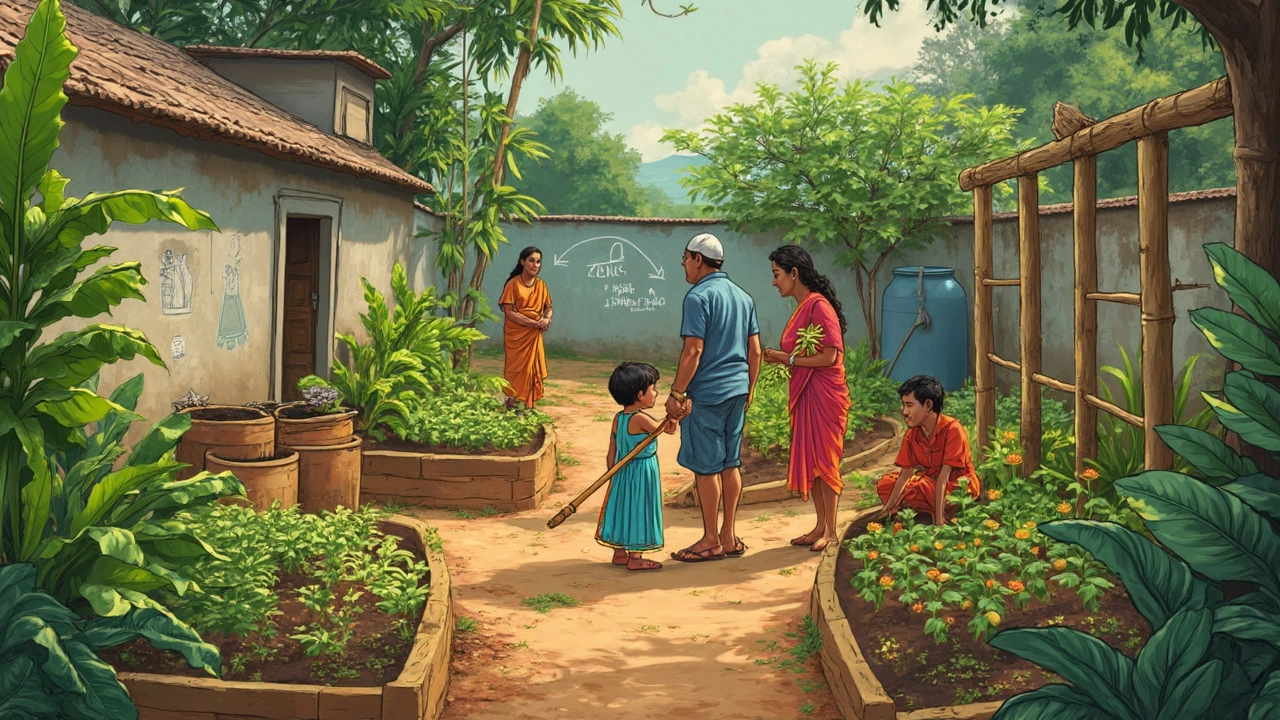Regenerative Gardening Explained
When working with Regenerative Gardening, a soil‑centric approach that restores ecosystem function, captures carbon, and reduces reliance on synthetic inputs. Also known as soil‑building gardening, it aims to create a self‑sustaining loop where plants, microbes, and insects support each other. This method differs from conventional gardening because it treats the garden as a living system, not just a place to grow food.
One of the core pillars is No‑Till Gardening, the practice of avoiding soil disturbance to preserve structure and microbial networks. By leaving the soil undisturbed, you keep carbon stored in the ground and protect the delicate web of organisms that help plants thrive. No‑till also reduces erosion, a benefit that directly supports regenerative gardening goals.
Another essential tool is Composting, the controlled decomposition of organic waste into nutrient‑rich humus. Compost feeds the soil, boosts its water‑holding capacity, and provides a slow‑release source of minerals. When you add compost to a no‑till system, the combination creates a powerful feedback loop: healthier soil leads to stronger plants, which in turn generate more organic matter for future compost.
Key Practices in Regenerative Gardening
Increasing Biodiversity, the variety of plants, insects, and microorganisms in a garden is another critical step. Diverse plantings attract beneficial pollinators and predatory insects that keep pests in check without chemicals. This biodiversity also enriches the soil food web, enhancing nutrient cycling and disease resistance. In short, the more species you welcome, the more resilient your garden becomes.
Water management ties all these elements together. Techniques like drip irrigation, mulching, and rainwater harvesting lower water use while keeping the soil moist. Moist soil encourages microbial activity, which speeds up the breakdown of compost and supports plant roots. When water use aligns with no‑till and mulching, you create a stable moisture environment that benefits every component of the regenerative loop.
Cover cropping adds another layer of benefit. By planting fast‑growing legumes or grasses during off‑seasons, you protect the soil from erosion, fix atmospheric nitrogen, and add organic matter when you terminate the cover crop. This practice reinforces the soil health gains made by compost and no‑till, making the system even more productive year after year.
Seasonal planning also matters. Understanding when to sow, harvest, and rotate crops ensures that you don’t deplete specific nutrients or invite disease cycles. Rotating families of plants—like moving tomatoes away from the same spot where beans were grown—helps maintain a balanced nutrient profile and reduces pathogen buildup.
All these techniques—no‑till, composting, biodiversity, smart water use, cover crops, and crop rotation—interlock to form a resilient, low‑input garden. They embody the idea that regenerative gardening is not a single trick but a suite of practices that reinforce each other. Below, you’ll find our curated collection of articles that dive deeper into each of these topics, offering step‑by‑step guides, real‑world case studies, and quick tips you can apply right away.
Permaculture vs Regenerative Gardening: What Sets Them Apart?
People use the terms permaculture and regenerative gardening a lot, but they're not quite the same thing. This article breaks down how permaculture is a big-picture design system, while regenerative gardening puts a laser focus on building soil and healing land. By looking at their core ideas, practical techniques, and real-world results, you'll get a clear view of which approach fits your own backyard (or community plot) goals best. Find out which method is more hands-on, which is more about planning, and how you can mix both if you want results. Plus, discover simple tips for making your garden greener and more resilient starting today.
- manufacturing
- India
- food processing
- garden tips
- rice cultivation
- government schemes
- balcony garden
- urban gardening
- balcony gardening
- profitable business
- business ideas
- plastic manufacturing
- drip irrigation
- plant care
- steel manufacturing
- sustainable gardening
- startup ideas
- steel industry
- flower gardening
- textile manufacturers






